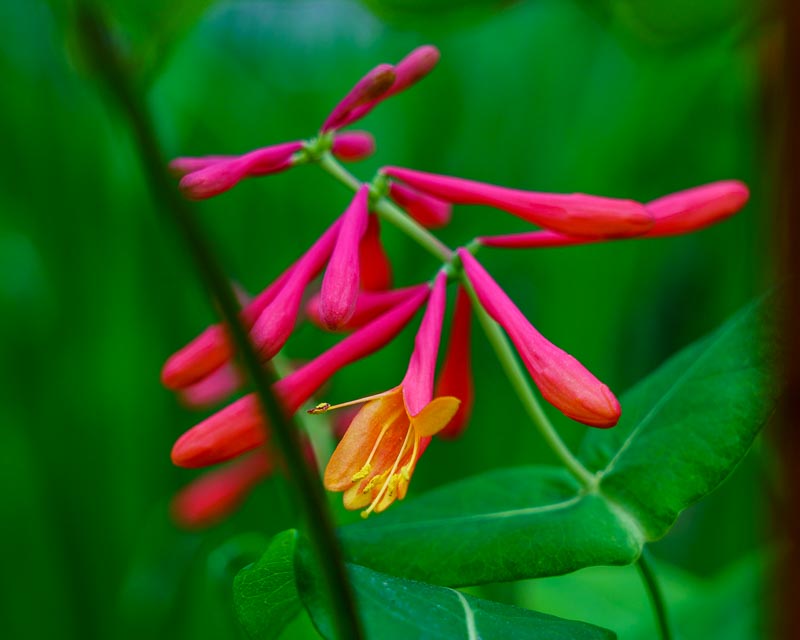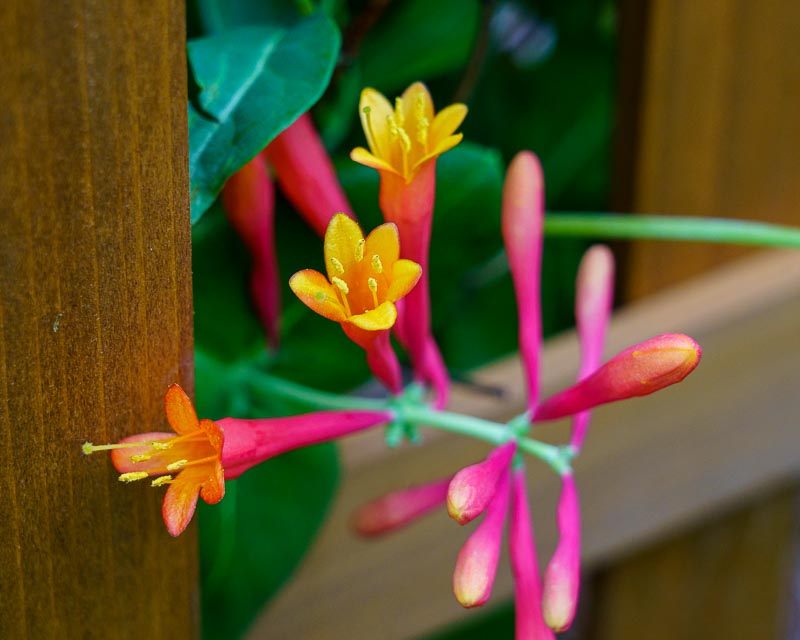Alabama Crimson Trumpet Honeysuckle
Common Name:
Alabama Crimson Trumpet Honeysuckle
Botanical Name:
Lonicera sempervirens 'Alabama Crimson'
Mature Size:
36” - 180” tall; 36” - 72” wide
Sun Exposure:
Full Sun, Partial Sun
Soil Type:
Clay, Loam, Sand, Silt
Soil pH:
5.5 - 8.0
Bloom Time:
Mid Spring to Mid Summer and sporadically after that
Flower Color:
Crimson Red
Care:
As a climbing vine, it tends to be leggy near the base and should be underplanted with low-growing facer plants. It should be planted near a fence, trellis or other landscape structure where it can be trained to grow upwards on it, or allowed to trail off a retaining wall or slope. It grows at a fast rate, and under ideal conditions can be expected to live for approximately 20 years.
Soil:
Honeysuckle needs well-draining soil. As long as this need is met, this plant adapts to a variety of soil conditions. If the soil does not drain well, add compost before planting. Coral honeysuckle prefers slightly acidic to neutral soil
Water:
Regular watering will help promote healthy blooming and is most important for young, establishing plants. Established plants are very drought-tolerant. Depending on the precipitation in your area, you might not have to water the plant.
Temperature and Humidity:
These native vines tolerate both heat and cold. Honeysuckle withstands hard frosts and winters down to USDA Zone 4. It prefers medium humidity levels, as high humidity can foster the spread of fungal diseases.
Fertilizer:
Fertilize Honeysuckle once in the spring with a complete, slow-release fertilizer. Excess nitrogen, such as from lawn run-off, causes the plant to produce more foliage than flowers.
Pruning:
Honeysuckle only needs pruning to maintain its desired shape or size. The best time to prune is after the bloom so you don't accidentally remove any flower buds.
Overwintering:
Because Honeysuckle plants are cold tolerant and withstand hard frost, there is not much required to overwinter these plants. Planting them near structures such as fences or trellises shelters them from damaging cold winds. Additionally, adding mulch in the fall insulates the root system in subzero winters.
Source:
https://plantfinder.nativeplanttrust.org/plant/Lonicera-sempervirens-Alabama-Crimson
https://www.thespruce.com/coral-honeysuckle-guide-5190661

